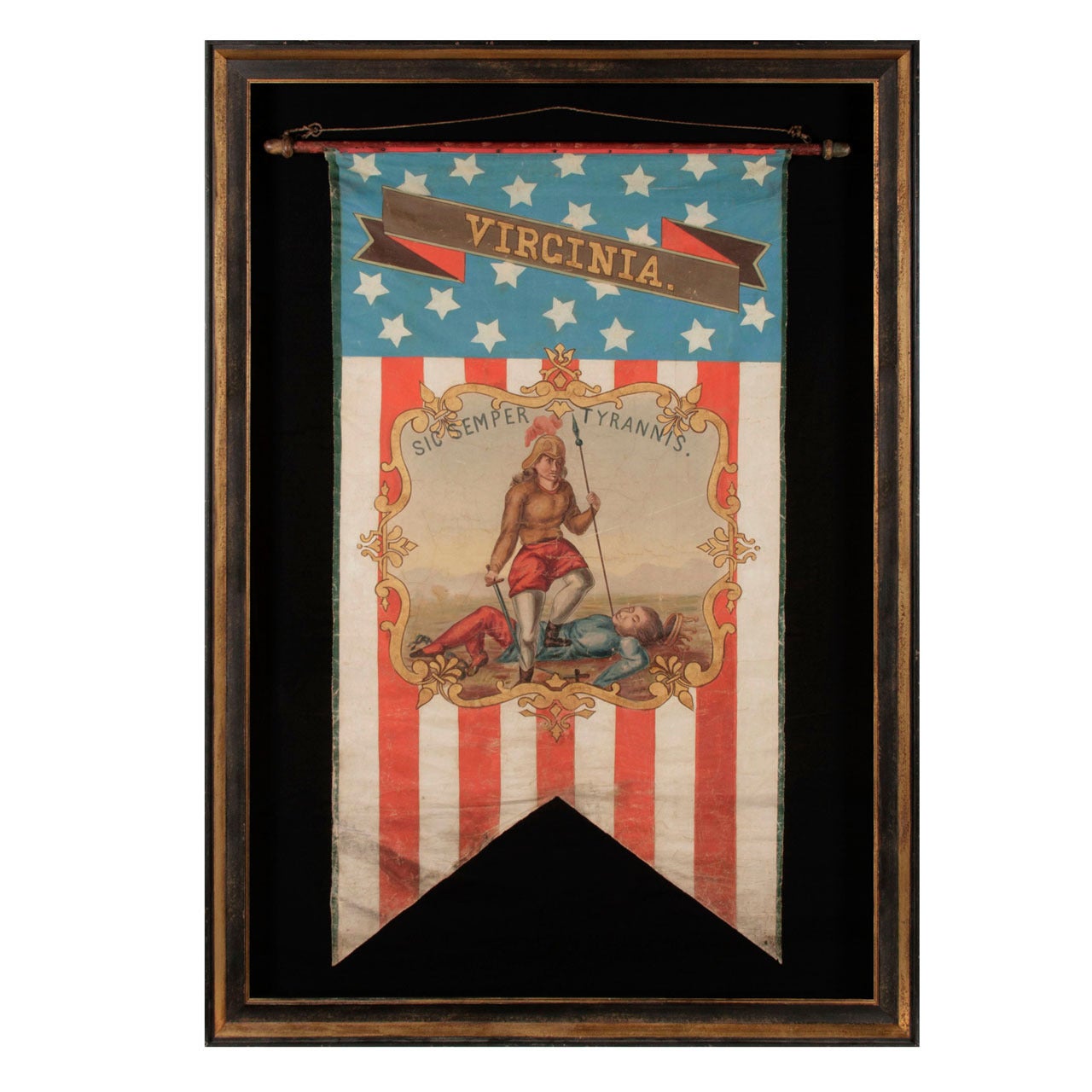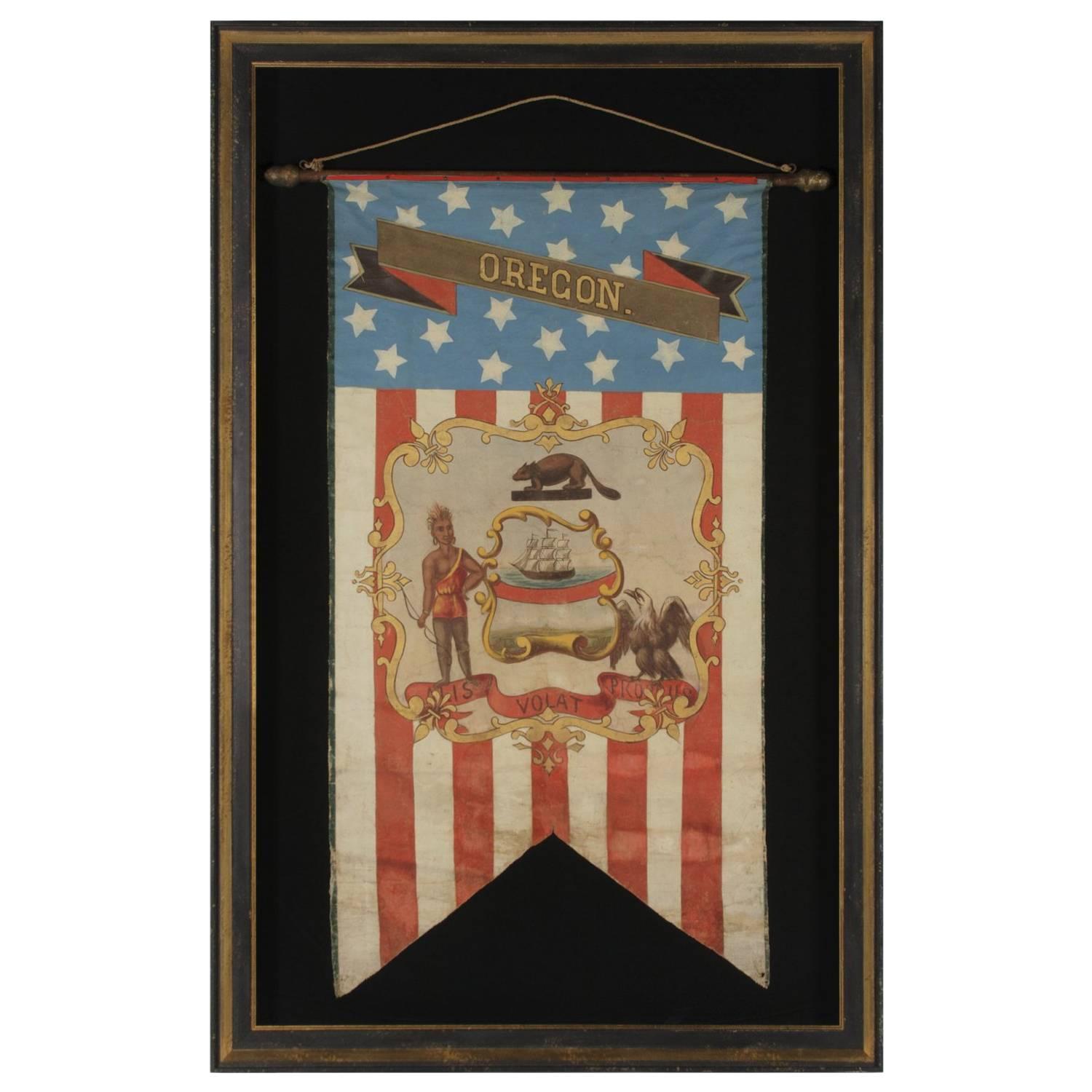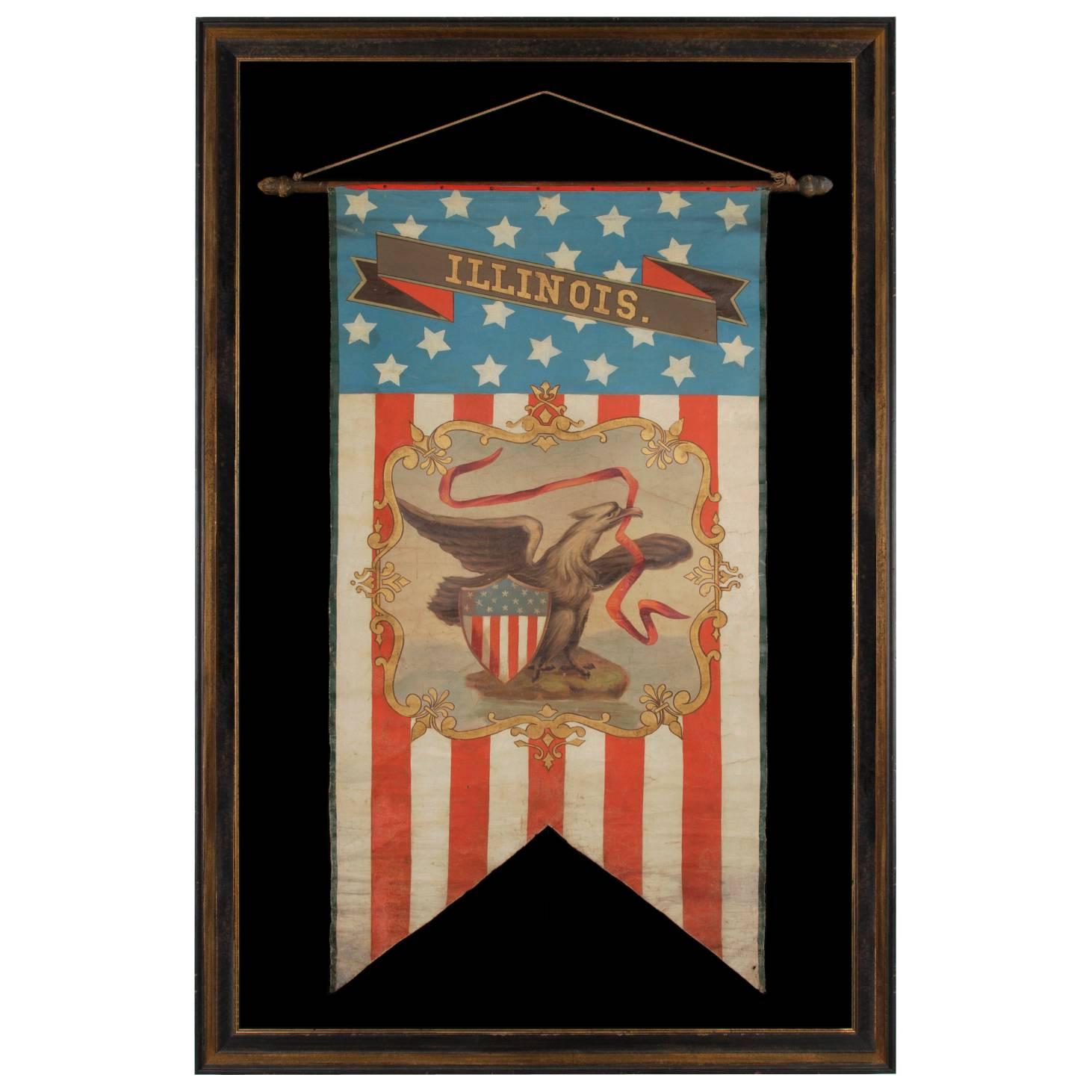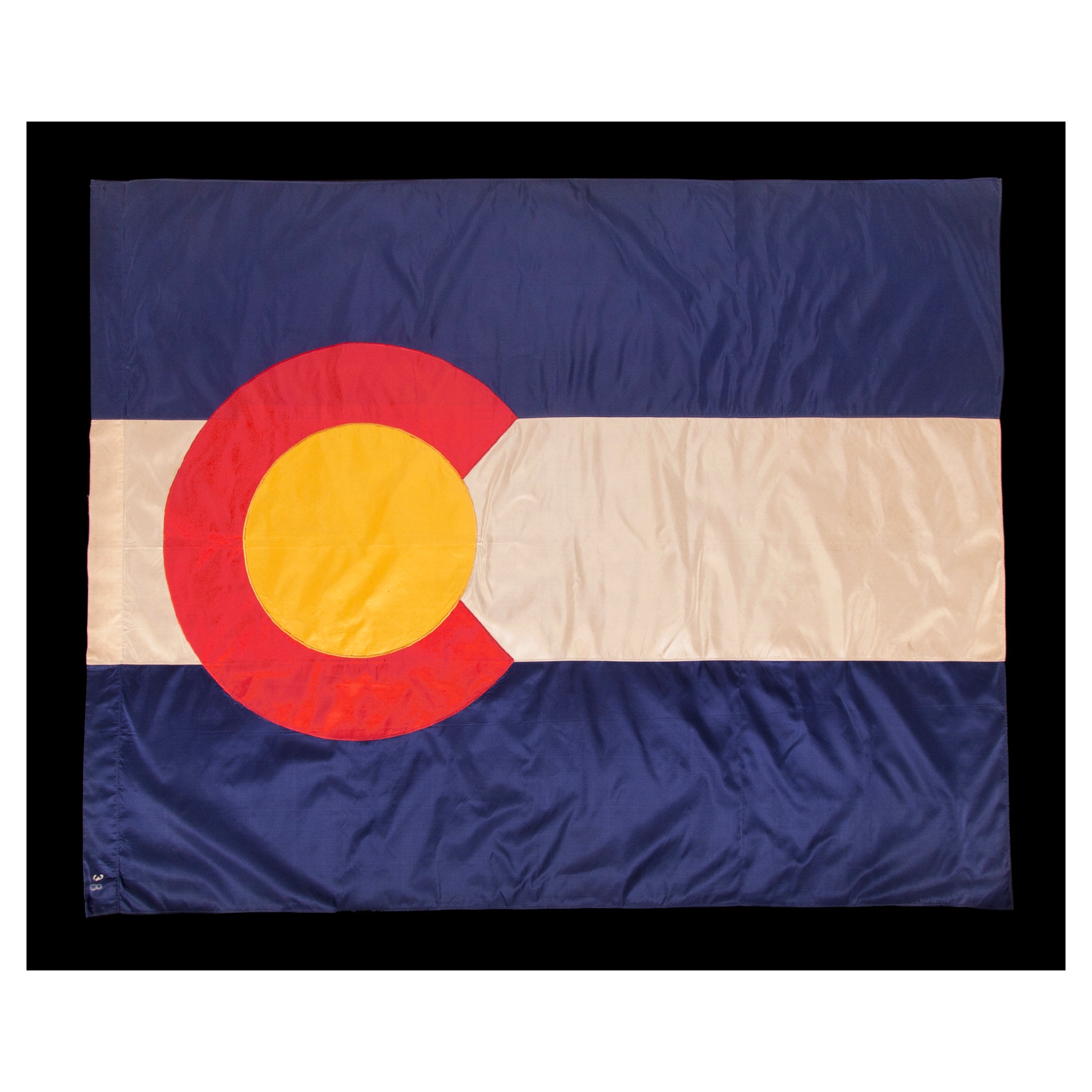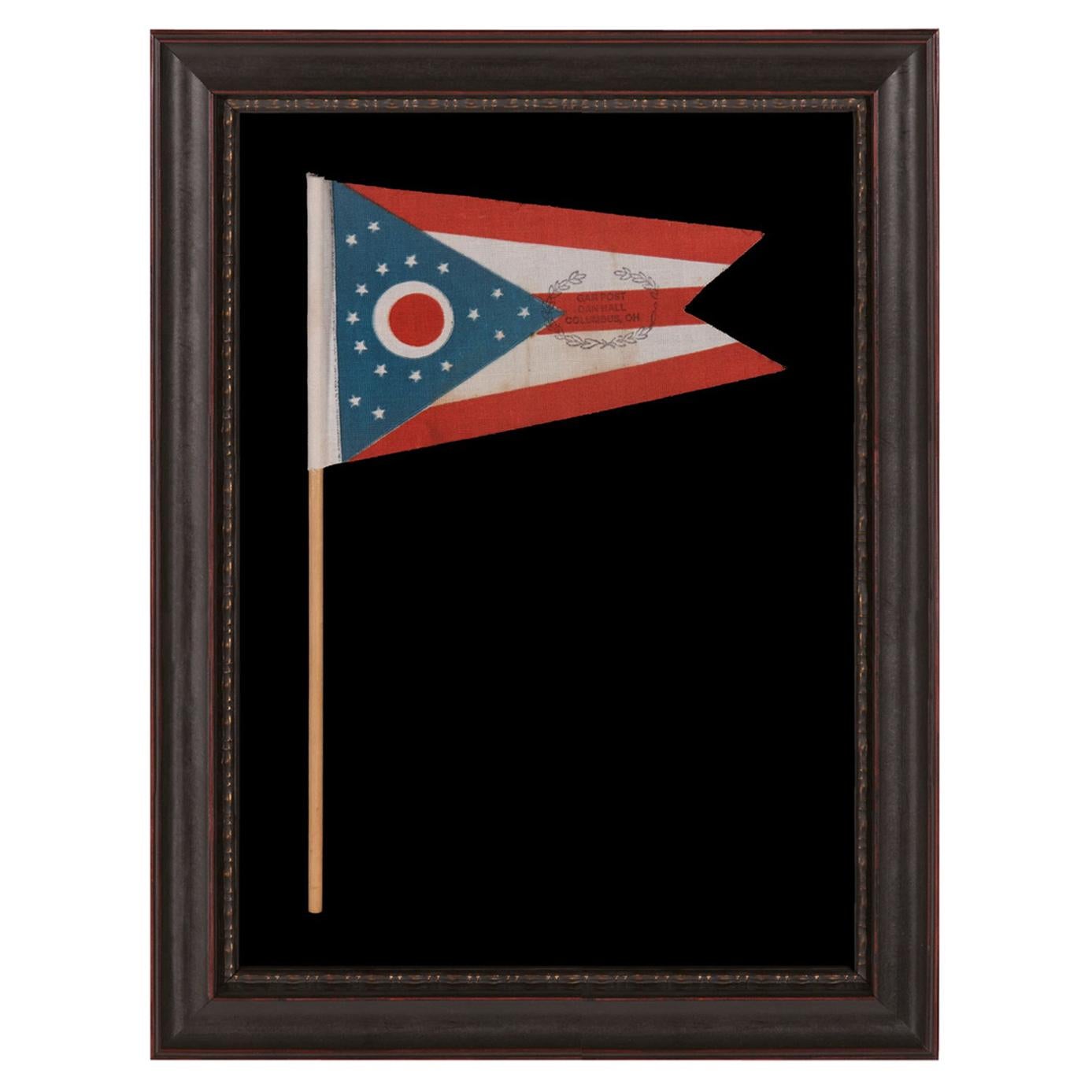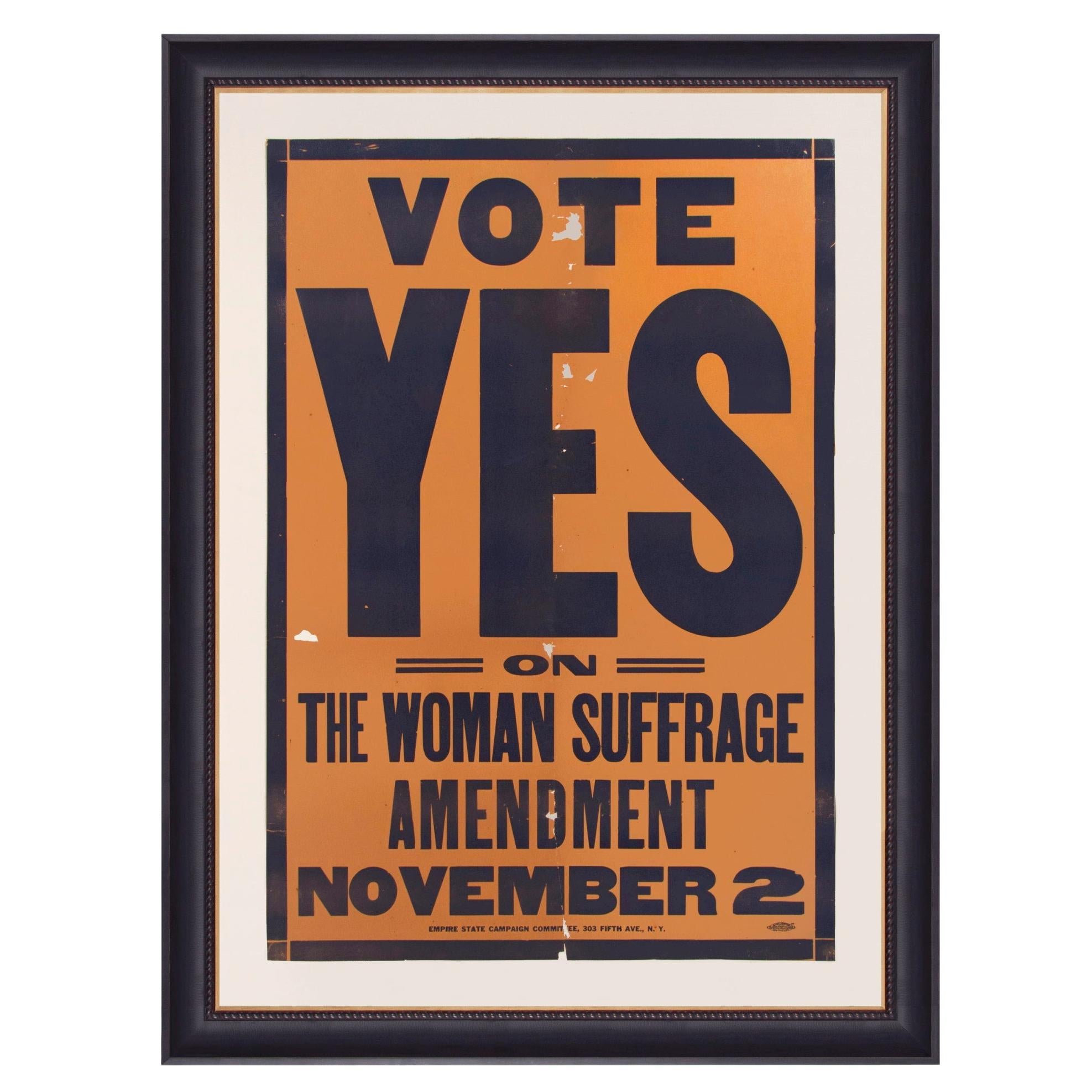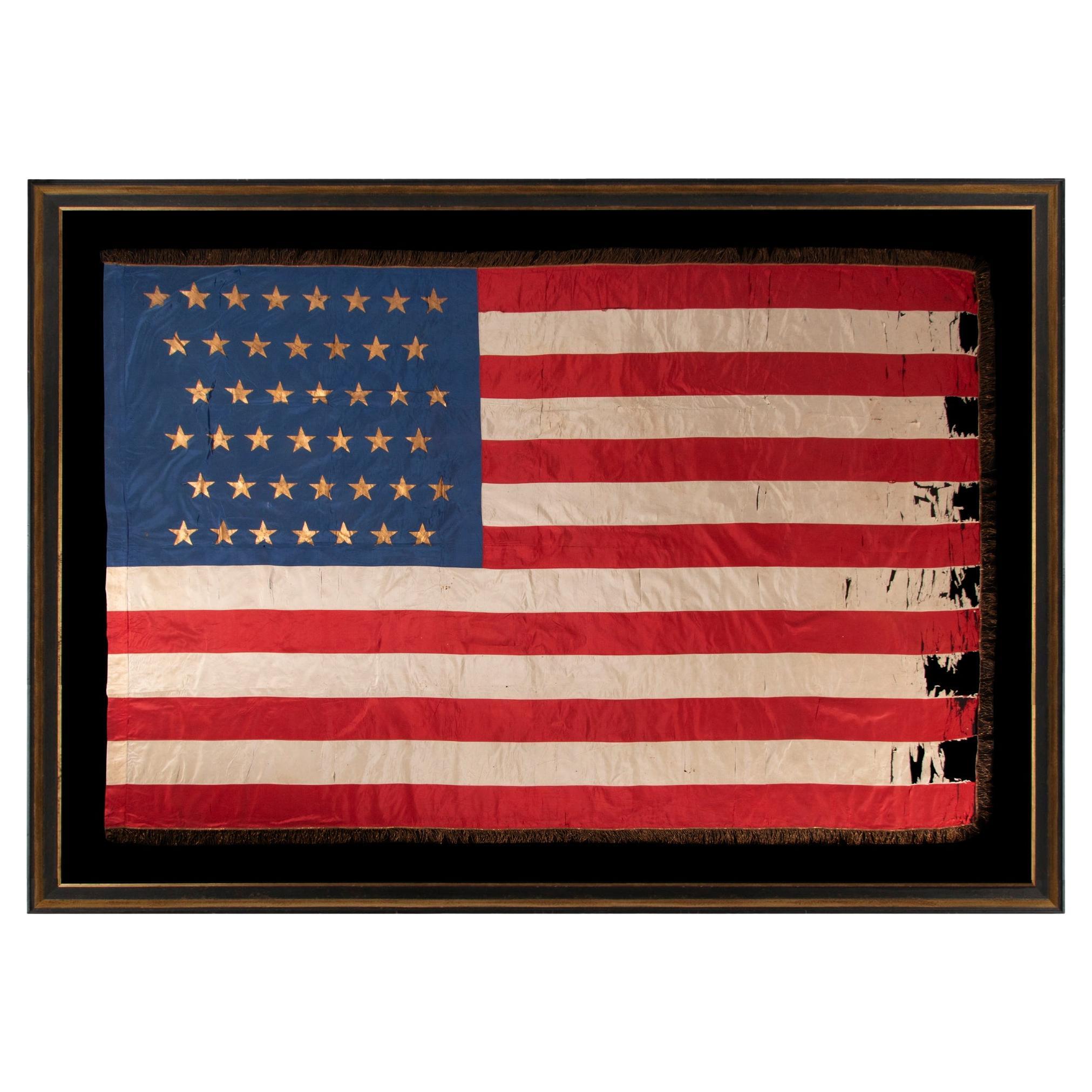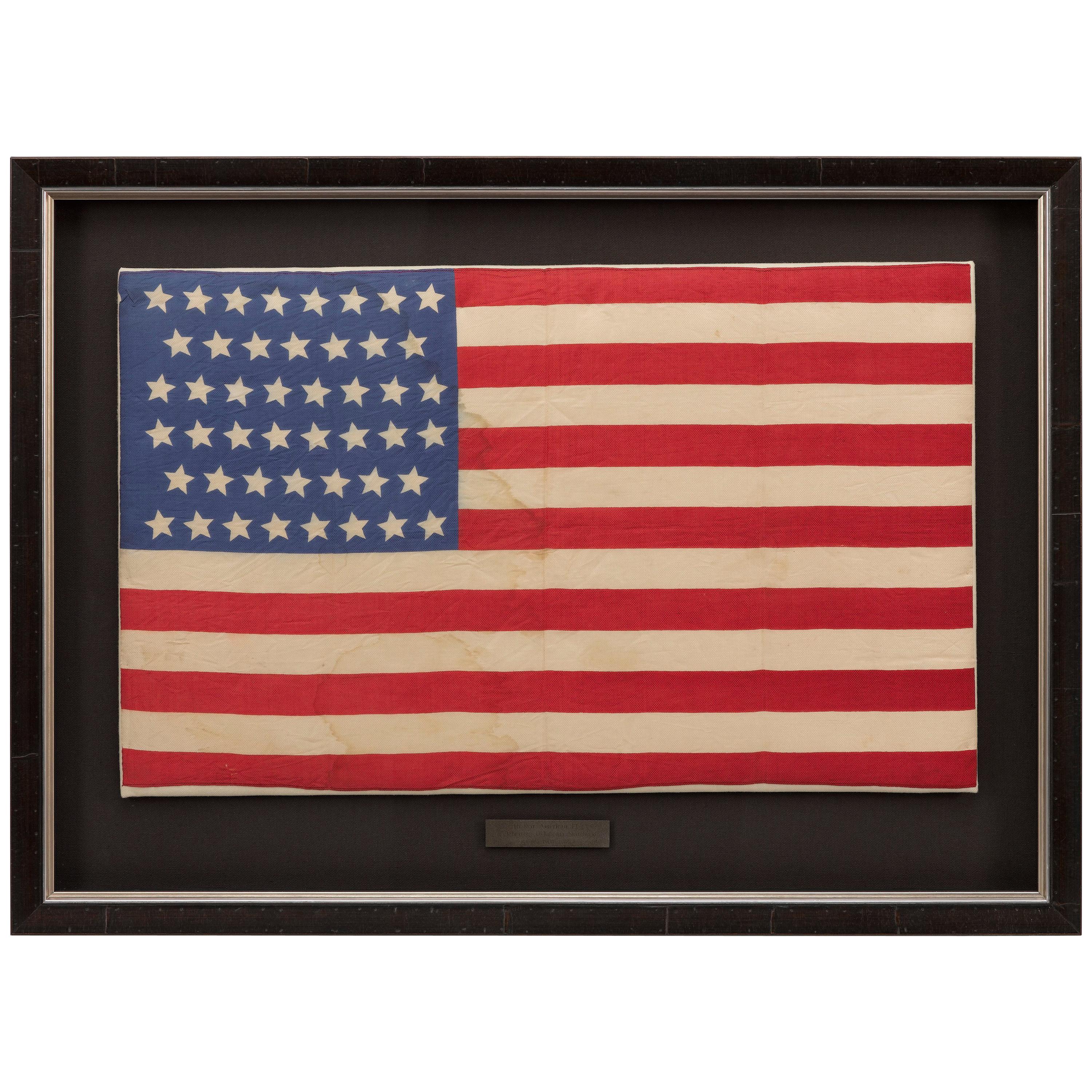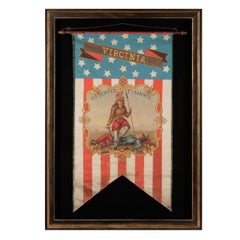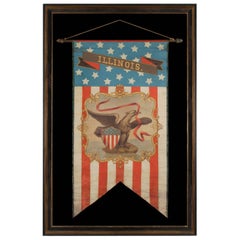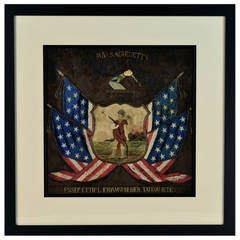
Exquisite Antique Silk Massachusetts State Seal
View Similar Items
1 of 3
Exquisite Antique Silk Massachusetts State Seal
About the Item
- Dimensions:Height: 30 in (76.2 cm)Width: 29 in (73.66 cm)Depth: 1 in (2.54 cm)
- Style:American Colonial (In the Style Of)
- Materials and Techniques:Silk,Woven
- Place of Origin:
- Period:
- Date of Manufacture:1820-1850
- Condition:Wear consistent with age and use. Minor losses. Minor fading. Beautiful colors and handiwork, some loss due to age wear & use. Professionally conserved.
- Seller Location:Acworth, GA
- Reference Number:Seller: 84301stDibs: LU140522576862
You May Also Like
- Hand-Painted Patriotic Banner with the Seal of the State of VirginiaLocated in York County, PAHAND-PAINTED PATRIOTIC BANNER WITH THE SEAL OF THE STATE OF VIRGINIA AND GREAT FOLK QUALITIES: Swallowtail format, patriotic vertical banner beari...Category
Antique 19th Century Political and Patriotic Memorabilia
MaterialsCanvas
Price Upon Request - Hand-Painted Patriotic Banner with the Seal of the State of OregonLocated in York County, PAHAND-PAINTED PATRIOTIC BANNER WITH THE SEAL OF THE STATE OF OREGON AND GREAT FOLK QUALITIES, 1861-1876: Swallowtail format, patriotic vertical banne...Category
Antique Late 19th Century American Political and Patriotic Memorabilia
MaterialsCanvas
Price Upon Request - Hand-Painted Patriotic Banner With The Seal of the State of IllinoisLocated in York County, PAHAND-PAINTED PATRIOTIC BANNER WITH THE SEAL OF THE STATE OF ILLINOIS AND GREAT FOLK QUALITIES PROBABLY MADE FOR THE 1868 DEMOCRAT NATIONAL CONVENTION...Category
Antique 1860s North American Political and Patriotic Memorabilia
MaterialsCanvas
Price Upon Request - Hand-Pained Banner with the Seal of the State of Mississippi, circa 1872Located in York County, PAUnique, hand-painted banner with the seal of the state of mississippi, likely having represented delegates from that state at the 1872 republican or dem...Category
Antique 1870s American Political and Patriotic Memorabilia
MaterialsCotton
Price Upon Request - Colorado State Flag, Made of Silk, Ca 1911-1920Located in York County, PACOLORADO STATE FLAG OF EXCEPTIONAL QUALITY, MADE OF SILK, CIRCA 1911-1920’s, EXTRAORDINARILY RARE IN THIS PERIOD AND THE EARLIEST EXAMPLE THAT I HAVE EVER ENCOUNTERED Early state flags are few and far between. While I am asked for them constantly, most states did not actually have official flags until the 20th century. On May 6th, 1911, Colorado became among the last to adopt a design. The project of doing so was spearheaded by the Denver Chapter of the Daughters of the American Revolution. The bill was introduced by Senator W.H. Sharply and adopted by the Eighteenth General Assembly. The artwork was the product of A.C. [Andrew Carlisle] Carson, President of the Ohio Society of Colorado. The meanings behind the elements in the design are as follows: The large letter "C" stands for Colorado and simultaneously for the Centennial State (Colorado entered the Union in 1876, the year in which our nation celebrated its 100th anniversary of independence), as well as the Columbine State (reflecting the state flower). The red color is included due to the fact that the word Colorado translates to scarlet or red in Spanish. The circle represents the sun, while the gold color symbolizes all-the-year sunshine, Colorado’s status as the greatest gold state, and one Columbine color. It was also included so that the Colorado state flag would have one more color than the U.S. flag. The color white reflects Colorado’s status as the greatest silver state, its eternal mountain snow, and one Columbine color. Lastly, the shade of Yale blue symbolizes all-the-year blue sky and one Columbine Color. Members of the D.A.R. were proud to note that this was also their color. Made sometime between the initial year of the adoption of this design and the 1920’s, this particular flag is the earliest Colorado example that I have ever encountered. The blue and white bars, red “C,” and golden circle are a’’ made of silk taffeta. This was a costly fabric, reserved for the best material a flag-maker produced. The flag is constructed in the manner of a battle flag, to be carried on foot. Squarish in its overall profile, silk was the fabric of choice for flags employed in this function, due to the fact that it was light weight, and thus practical for hand-carrying, while simultaneously formal in appearance, appropriate for the sort of ceremonial use that military presentation often demands. The style of the hoist is also typical for field or parade use. Here the fabric was rolled over to form an open sleeve, through which a wooden staff could be inserted. The sleeve is lined on the interior with black cotton. Leather tabs, at the top and bottom, fit over metal posts on the staff, designed to accept them, to fix the flag in its proper position. The bars were pieced and joined with lineal machine stitching. The hoist and fly ends were finished and hemmed by the same method. The devices are double-appliquéd (applied to both sides) with a machine buttonhole / blanket stitch. Though machines that produced buttonholes were, remarkably, available alongside the earliest standard machines, in the 1850’s and 60’s, the use of this sort of stitch in a running format, for appliqué work, remained highly unusual, even as late as the first half of the twentieth century, probably because it used a ton of thread when compared to the zigzag or satin stitch. It could be expected to appear more often in the hands of a maker of very fine flags, that employed embroidery machines and commissioned custom, fancy work of all sorts. Though unsigned—in no way uncommon in early examples, which were seldom signed—that is precisely the sort of firm that produced the Colorado flag...Category
Early 20th Century American Political and Patriotic Memorabilia
MaterialsSilk
Price Upon Request - 44 Star Antique American Flag, Stars in a Triple Wreath Pattern, Wyoming StateLocated in York County, PA44 STAR ANTIQUE AMERICAN PARADE FLAG WITH A TRIPLE WREATH FORM OF THE MEDALLION CONFIGURATION, RARE IN THIS PERIOD WITH A CIRCULAR STAR ARRANGEMENT, 1890-1896, REFLECTS THE ADDITION OF WYOMING TO THE UNION 44 star American parade flag, printed on plain weave cotton. The stars are arranged in a circular medallion configuration that consists of three consecutive wreaths of stars, with a single star in the very center and a flanking star in each corner of the blue canton, outside the primary pattern. Variations of this beautiful and desirable arrangement are seen primarily in flags made between the Civil War (1861-65) and the nation’s centennial (1876). While there remained no official star configuration until 1912, flag makers basically abandoned circular, star-shaped, and other, dynamic, non-linear designs after the 38 star era (1876-1889). Examples with greater than that star count are rarely encountered. Note how this particular, orderly, circular arrangement, in such a large star count is somewhat reminiscent of a clear summer night sky, filled with stars. Also note that the canton is square, as opposed to rectangular, and how the proportions of the flag itself are somewhat more squarish than usual. Together these traits provide additional, visual peculiarities that impact to this great example of 19th century flag-making. It is interesting to note that I discovered a period image of this particular variety of parade flag, in an early postcard, made to advertise the Betsy Ross House in Philadelphia, which had, in 1898, been opened to the public as a museum. A photo of the front of the house shows two of these flags, affixed to staffs, propped at opposite angles in the front window. While perhaps difficult for the casual observer to identify, connoisseurs of printed flags may recognize their scale and iconic design. The postcard is hand-dated 1905. Wyoming became the 44th state on July 10th, 1890. Even though the 44 star flag was not official until July 4th, 1891, most flag-makers would have begun to add a 44th star to their flags as soon as Wyoming declared statehood, or perhaps even before the state was actually added. Because flag-making was a competitive venture, flag-makers did not want to be producing 43 star flags...Category
Antique 1890s American Political and Patriotic Memorabilia
MaterialsCotton
Recently Viewed
View AllMore Ways To Browse
Antique State Flags
Silk Flags
American Indian Beaded
Antique American Indian Beaded
Gold Bullion
30 Flag
Indian Flag
Indian Black Beads
Antique Textile Beaded
Bead Flag
Beaded Flag
Antique American Indian Textiles
Antique Indian Textile Framed
Antique Bullion
Antique Indian Flag
Antique Cotton Fabric
Blue And White Stripe
13 Star
